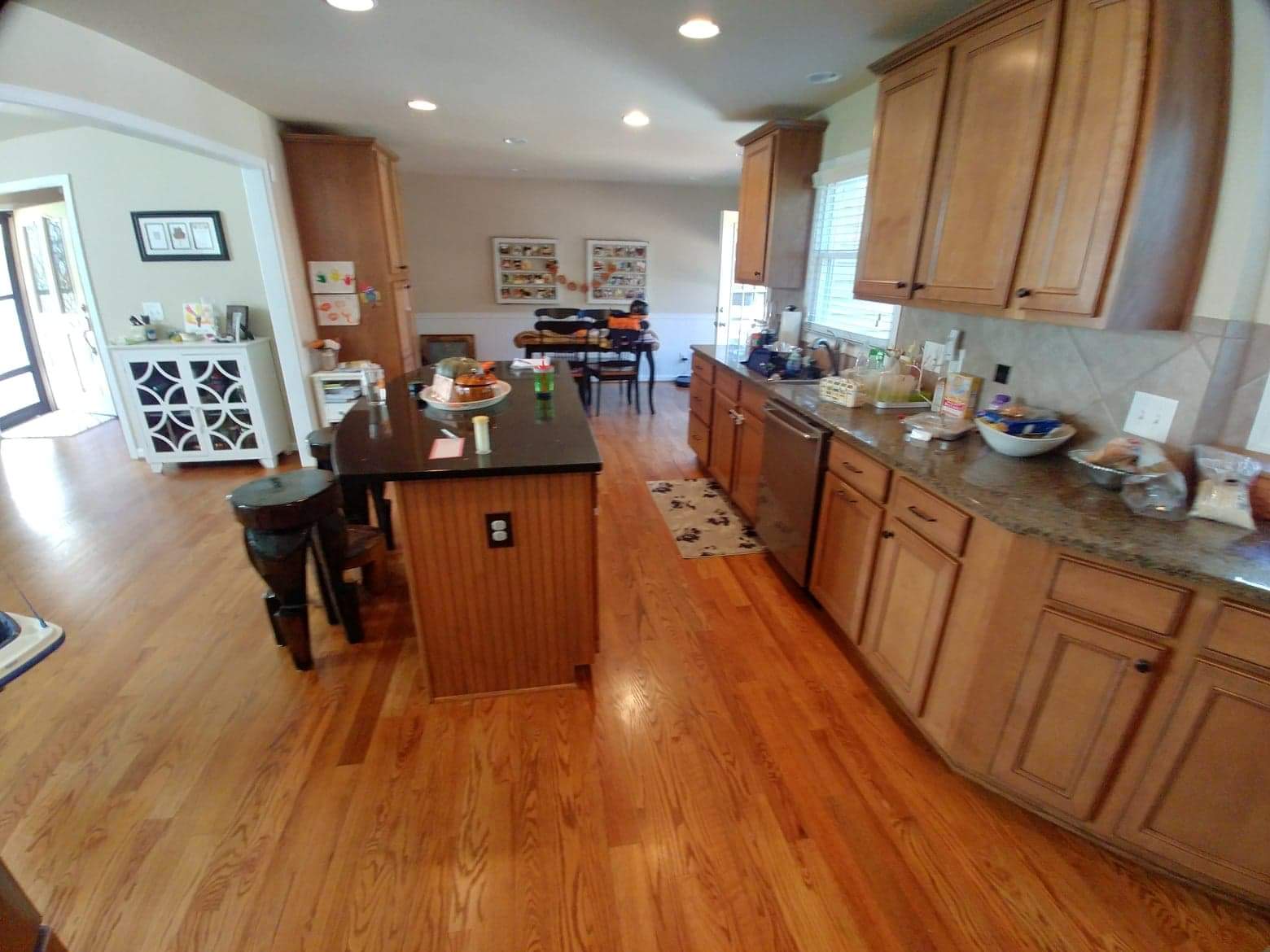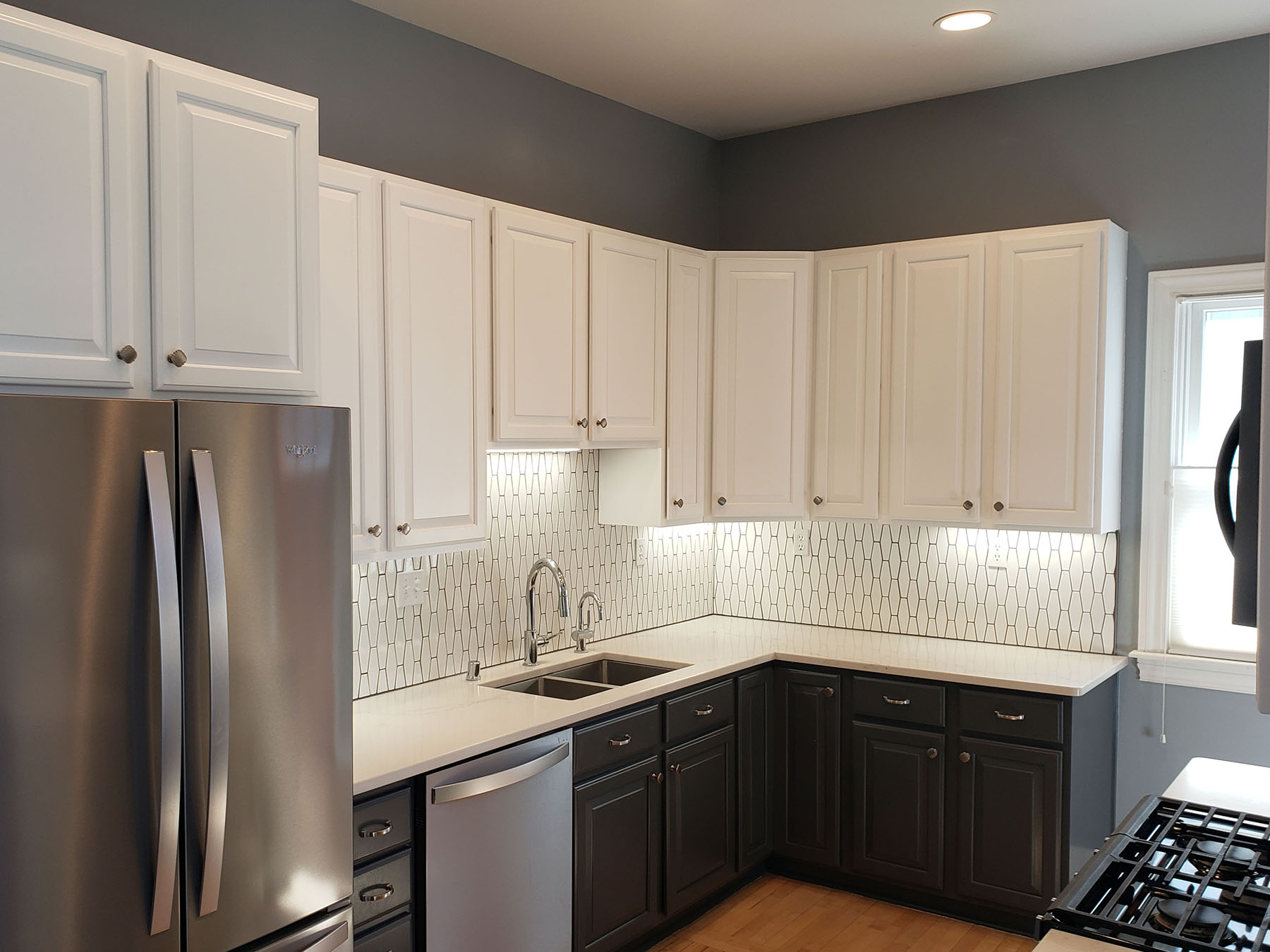Finding the Right Painter in Atlanta, GA

Choosing the right painter for your kitchen cabinets is a crucial step in transforming your Atlanta home. A poorly executed paint job can be costly to fix, leading to frustration and wasted time. Careful consideration and thorough research are essential to ensure a smooth and successful project.
Five Key Questions to Ask Potential Painters, Kitchen cabinet painting atlanta ga
Before committing to a painter, it’s vital to clarify expectations and understand their process. Asking the right questions helps avoid misunderstandings and ensures the project aligns with your vision.
- What is your experience painting kitchen cabinets specifically?
- What type of paint do you use, and why is it suitable for cabinets?
- Can you provide a detailed breakdown of the painting process, including preparation steps?
- What is your estimated timeline for completing the project, and what are potential factors that could delay it?
- What is your warranty policy, and what does it cover?
Verifying Painter Legitimacy and Experience
Protecting yourself from unreliable contractors requires proactive steps to validate their credentials and reputation. A few simple checks can make a significant difference in your project’s outcome.
- Check for licensing and insurance: Confirm the painter holds the necessary licenses and insurance to operate legally and protect you from potential liabilities. This information should be readily available upon request.
- Examine their portfolio: Request images of previously completed kitchen cabinet painting projects. Pay attention to the quality of the finish, attention to detail, and overall professionalism displayed in the photos. Compare multiple projects to assess consistency.
- Seek references: Ask for references from previous clients. Contacting these individuals allows you to gather firsthand accounts of their experiences, including the painter’s responsiveness, professionalism, and the quality of their work.
Independent Painters vs. Larger Companies
The choice between hiring an independent painter or a larger company involves weighing various factors. Each option presents advantages and disadvantages that should be carefully considered.
| Independent Painters | Larger Companies | |
|---|---|---|
| Cost | Potentially lower initial cost, but may lack transparency in pricing. | Generally higher initial cost, but may offer bundled services and potentially better pricing for larger projects. |
| Experience | Variable experience levels; some may specialize in kitchen cabinets, while others may have broader experience. | Usually have a team with diverse experience and established processes, leading to more consistent results. |
| Warranty | Warranty may vary greatly; some may offer limited or no warranty. | Typically offer more comprehensive warranties, providing greater protection against defects. |
| Customer Service | Customer service may depend on the individual painter’s responsiveness and communication style. | Usually have established customer service channels and procedures, leading to more efficient communication and issue resolution. |
The Importance of Reviews and Testimonials
Online reviews and testimonials offer valuable insights into a painter’s reputation and the quality of their work. They provide a glimpse into real-world experiences, allowing you to make an informed decision. Before selecting a painter, thoroughly review multiple platforms, paying attention to both positive and negative feedback to get a well-rounded perspective. Look for consistent themes and patterns in the reviews to assess the reliability and quality of the painter’s services. A painter with consistently positive reviews and a responsive approach to addressing negative feedback demonstrates a commitment to customer satisfaction and professionalism.
Preparing for Your Kitchen Cabinet Painting Project

The hush that fell over the old Victorian kitchen was unsettling. Dust motes danced in the lone sunbeam slicing through the grime-coated windows, illuminating the secrets held within those aged cabinets. The project ahead felt less like a renovation and more like an archaeological dig, unearthing layers of history, one chipped paint flake at a time. A successful outcome depended not on mere painting, but on meticulous preparation – a silent ritual to appease the ghosts of kitchens past.
Preparing your kitchen cabinets for painting is a crucial step, often overlooked, that determines the final look and longevity of your project. Careful cleaning, sanding, and priming lay the groundwork for a flawlessly painted finish. Neglecting this stage is akin to building a house on shifting sand; the paint will eventually peel and crack, revealing the shoddy foundation beneath. The transformation, therefore, hinges on this preparatory phase.
Cabinet Hardware Removal
Removing cabinet hardware, while seemingly simple, requires a delicate touch to avoid damage. First, lay down a protective covering – a thick towel or sheet – on your work surface to prevent scratches. Then, using the appropriate screwdriver, carefully unscrew each knob or handle, keeping the screws organized in labeled containers or bags. This meticulous organization will prevent misplaced screws and ensure a smooth reinstallation later. Remember to take photos before removing each piece, noting the placement of each handle. This proves invaluable during reassembly, especially if you’re dealing with an intricate design.
Cleaning and Sanding the Cabinets
Thorough cleaning is paramount. Begin by wiping down all surfaces with a degreasing solution, ensuring you reach every nook and cranny. This removes grease, grime, and any previous coatings that might interfere with the adhesion of the new paint. Once dry, use fine-grit sandpaper (180-220 grit) to lightly sand all surfaces, paying attention to any imperfections or raised areas. This process creates a smoother surface for better paint adhesion, resulting in a professional-looking finish. The aim is not to strip the wood completely but to create a slightly rough surface for better grip.
Priming the Cabinets
Priming serves as a crucial bridge between the wood and the paint. It seals the wood, preventing the absorption of paint, promoting even coverage, and enhancing the paint’s durability. Choose a high-quality primer suitable for your cabinets’ material (wood, laminate, etc.). Apply a thin, even coat, allowing it to dry completely before proceeding to the next stage. This patient waiting period ensures a perfect canvas for the final paint application. A rushed process can lead to an uneven finish and potential problems later.
Essential Supplies for Cabinet Painting
Careful planning and the acquisition of the right tools are vital. A haphazard approach can lead to delays and frustration. Gather all your supplies before starting the project. This prevents interruptions and ensures a smooth workflow.
- Degreasing solution
- Fine-grit sandpaper (180-220 grit)
- Primer (suitable for your cabinet material)
- Paint (choose a high-quality, durable paint)
- Paintbrushes and/or rollers
- Painter’s tape
- Drop cloths or plastic sheeting
- Screwdrivers (appropriate sizes)
- Putty knife
- Safety glasses and gloves
Protecting Countertops and Floors
Protecting your countertops and floors from paint splatters and drips is essential. A well-protected workspace prevents costly repairs and cleanup. Utilize drop cloths or plastic sheeting, ensuring complete coverage. Painter’s tape can further protect edges and delicate areas. For particularly sensitive surfaces, consider using additional protective layers, such as cardboard or thick towels. The goal is to create a barrier against accidental damage, allowing you to focus on the painting process. A meticulous approach in this stage will save you time and effort later.
Choosing Paint and Colors for Your Cabinets: Kitchen Cabinet Painting Atlanta Ga

The heart of your kitchen renovation often beats within the choice of cabinet paint. This seemingly small decision dramatically impacts the overall feel and functionality of the space. Selecting the right paint and color is a crucial step, a delicate dance between durability, aesthetics, and personal preference. A poorly chosen paint can lead to chipping, peeling, and an overall disappointing result, while the perfect shade can transform your kitchen into a culinary masterpiece.
Choosing the correct type of paint is paramount. Kitchen cabinets endure a considerable amount of wear and tear – splashes, spills, and the constant opening and closing. Therefore, selecting a durable, easy-to-clean finish is essential.
Paint Types for Kitchen Cabinets
The most common choices for kitchen cabinets are latex and enamel paints. Latex paints, known for their water-based composition, offer excellent breathability, making them less prone to trapping moisture. This is beneficial in humid kitchen environments. They also tend to have lower VOCs (volatile organic compounds), making them a more environmentally friendly option. However, latex paints might not be as durable as their enamel counterparts, requiring more frequent touch-ups. Enamel paints, typically oil-based, boast superior hardness and durability. They are highly resistant to scratches and stains, providing a long-lasting, high-gloss finish. However, enamel paints often have a stronger odor during application and require mineral spirits for cleanup. For a happy medium, consider an alkyd-based enamel, which offers many of the benefits of oil-based paints with reduced odor and easier cleanup.
Popular Kitchen Cabinet Paint Colors and Coordinating Backsplashes
The selection of cabinet color significantly influences the kitchen’s mood and style. Consider these popular options and their accompanying backsplash ideas:
A classic white, such as “Simply White” by Benjamin Moore, creates a bright, airy atmosphere suitable for various styles, from farmhouse to modern. A white subway tile backsplash complements this timeless choice perfectly. A softer white, such as “White Dove,” offers a slightly warmer, more subtle feel. A marble backsplash would elevate this choice.
Shades of gray, like “Agreeable Gray” by Sherwin-Williams, provide a sophisticated, neutral backdrop. They can work in both traditional and contemporary kitchens. A gray and white patterned backsplash or a sleek metallic backsplash would create a stylish contrast. Darker grays, like “Iron Ore,” offer a dramatic, modern aesthetic, best paired with a lighter-colored countertop and backsplash to prevent the space from feeling too heavy. A simple white or light-colored brick backsplash would provide balance.
Navy blue, a bold yet elegant choice, lends a sense of richness and depth to the kitchen. A white or cream backsplash offsets the navy beautifully, creating a visually striking contrast. A patterned backsplash with navy accents can also work well.
Example Kitchen Design
Imagine a kitchen featuring shaker-style cabinets painted in a warm, creamy off-white, reminiscent of “Creamy White” by Behr. The cabinets are paired with sleek, dark gray quartz countertops, creating a striking contrast. A classic white subway tile backsplash provides a clean, crisp backdrop. The overall style is transitional, blending traditional elements with modern clean lines.
